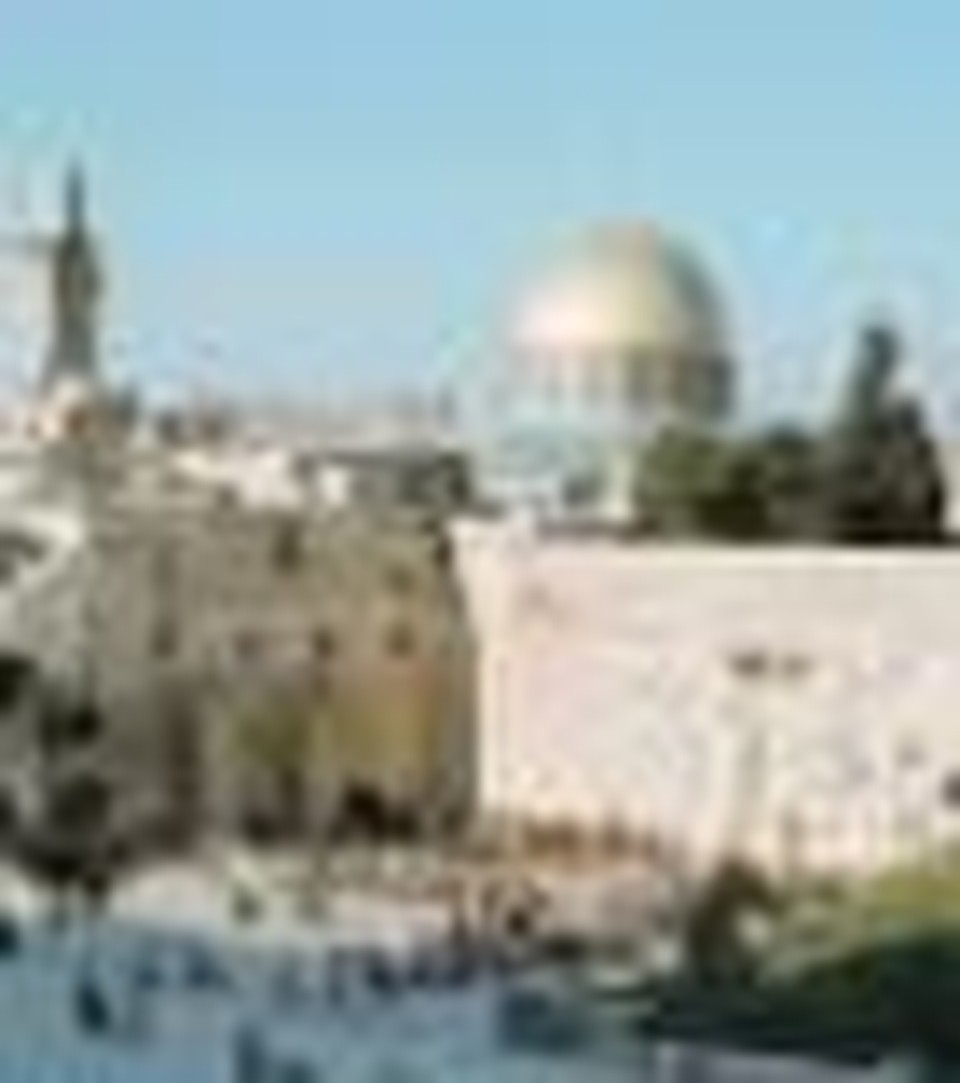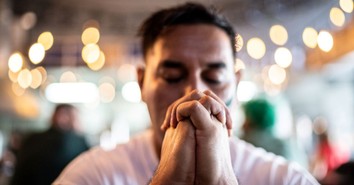Thousands to Celebrate Easter, Holy Week in Israel

Thousands of pilgrims and tourists from around the world flock to Israel every year to celebrate the Easter and Passover holidays. Approximately 105,000 and tourists are expected to arrive this year, approximately a 17 percent increase over 2009.[1]
Holy Week, which includes Palm Sunday, Good Friday and Easter, commenced this year on March 28. Palm Sunday, according to the Bible is the day Jesus rode into Jerusalem and was greeted by crowds waving palm fronds and was celebrated by hundred of pilgrims celebrated in Jerusalem and in Bethlehem.[2]
Good Friday, which this year falls on April 2, commemorates the crucifixion of Jesus. Easter Sunday is celebrated two days later. On that day, according to Christian tradition holds that Jesus was resurrected. Passover begins Monday (March 29) evening.
Traditional Easter celebrations are held annually in the old city of Jerusalem. This includes a Good Friday procession in which Christian pilgrims from around the world walk the Via Dolorosa path to the Church of the Holy Sepulcher, where Christians believe Jesus was buried. The route starts at the Lion's Gate on the east side of the old city and concludes at the Holy Sepulcher in the Christian quarter in the west of the old city. It is believed that the Via Dolorosa marks the route along which Jesus walked carrying the cross on which he would be crucified.[3]
Christians, in addition to adherents of all other faiths, enjoy freedom of religion in Israel. In 2008, more than two million Christians visited Israel.[4] Israel is also one of the only places in the Middle East where the Christian population is growing.[5] In 1949, there were 34,000 Christians living in Israel. In December 2005 there were 146,000 and projections for the end of 2010 estimate the Christian population will reach 163,000.[6]
Israel's Declaration of Independence, issued in 1948, describes the country as a Jewish state, but extends religious freedoms to all of its inhabitants by stating that Israel "will ensure complete equality of social and political rights to all its inhabitants irrespective of religion, race or sex; it will guarantee freedom of religion, conscience, language, education and culture; it will safeguard the Holy Places of all religions."[7]
Israel, the West Bank and Gaza are home to hundreds of religious monuments and places of worship holy to Christians, Muslims and Jews. Israel has enacted comprehensive laws protecting all such sites and ensuring access to people of all religions. The same protections have not been extended by the Palestinian Authority or under Jordanian rule. As a result, since Israel's establishment in 1948, a significant number of Jewish holy sites has been damaged or vandalized.[8]
For example, in October 2000, Palestinians destroyed the compound of Joseph's Tomb near Nablus. Palestinian rioters ransacked the site and set fire to it despite the Palestinian security services' agreement to protect it.[9]
In the same month, a Palestinian mob attacked and desecrated a Byzantine-era synagogue in Jericho, setting it on fire and damaging an ancient mosaic.[10]
The Israel Project is an international non-profit organization devoted to educating the press and the public about Israel while promoting security, freedom and peace. The Israel Project provides journalists, leaders and opinion-makers accurate information about Israel. The Israel Project is not related to any government or government agency.
Footnotes:
[1] Israel Ministry of Tourism communiqué, March 24, 2010
[2] The Associated Press, "Palm Sunday marked in J'lem, W. Bank," The Jerusalem Post, March 28, 2010, http://www.jpost.com/Home/Article.aspx?id=171985
[3] "Easter," Religion Facts, http://www.religionfacts.com/christianity/holidays/easter.htm. Accessed March 28, 2010; "Via Dolorosa, Jerusalem," Sacred Destinations, http://www.sacred-destinations.com/israel/jerusalem-via-dolorosa. Accessed March 28, 2010
[4] Israel Ministry of Tourism press release, March 11, 2009
[5] "Christians are Leaving the Middle East," VOA News, Jan. 17, 2006, http://www.voanews.com/english/archive/2006-01/2006-01-17-voa55.cfm?CFID=282257393&CFTOKEN=96505931
[6] "Christmas 2005: Christians in Israel," Israel Central Bureau of Statistics, Dec. 25, 2005, http://www.cbs.gov.il/hodaot2005n/11_05_281e.pdf
[7] "Declaration of the Establishment of the State of Israel," Israel Ministry of Foreign Affairs Web site, May 14, 1948, http://www.mfa.gov.il/MFA/Peace%20Process/Guide%20to%20the%20Peace%20Process/Declaration%20of%20Establishment%20of%20State%20of%20Israel
[8] "Protection of Holy Places Law," Israel Ministry of Foreign Affairs, June 30, 1998, http://www.mfa.gov.il/MFA/Peace+Process/Guide+to+the+Peace+Process/Protection+of+Holy+Places+Law.htm
[9] Shragai, Nadav, "The Palestinian Authority and the Jewish Holy Sites in the West Bank: Rachel's Tomb as a Test Case," Jerusalem Center for Public Affairs, Dec. 2, 2007, http://www.jcpa.org/JCPA/Templates/ShowPage.asp?DBID=1&LNGID=1&TMID=111&FID=443&PID=0&IID=1923; Kershner, Isbabel, "Pilgrimage to Roots of Faith and Strife," The New York Times, Oct. 23, 2008, http://www.nytimes.com/2008/10/24/world/middleeast/24tomb.html?_r=1
[10] Shragai, Nadav, "The Palestinian Authority and the Jewish Holy Sites in the West Bank: Rachel's Tomb as a Test Case," Jerusalem Center for Public Affairs, Dec. 2, 2007, http://www.jcpa.org/JCPA/Templates/ShowPage.asp?DBID=1&LNGID=1&TMID=111&FID=443&PID=0&IID=1923; Kershner, Isbabel, "Pilgrimage to Roots of Faith and Strife," The New York Times, Oct. 23, 2008, http://www.nytimes.com/2008/10/24/world/middleeast/24tomb.html?_r=1
Originally published March 31, 2010.







